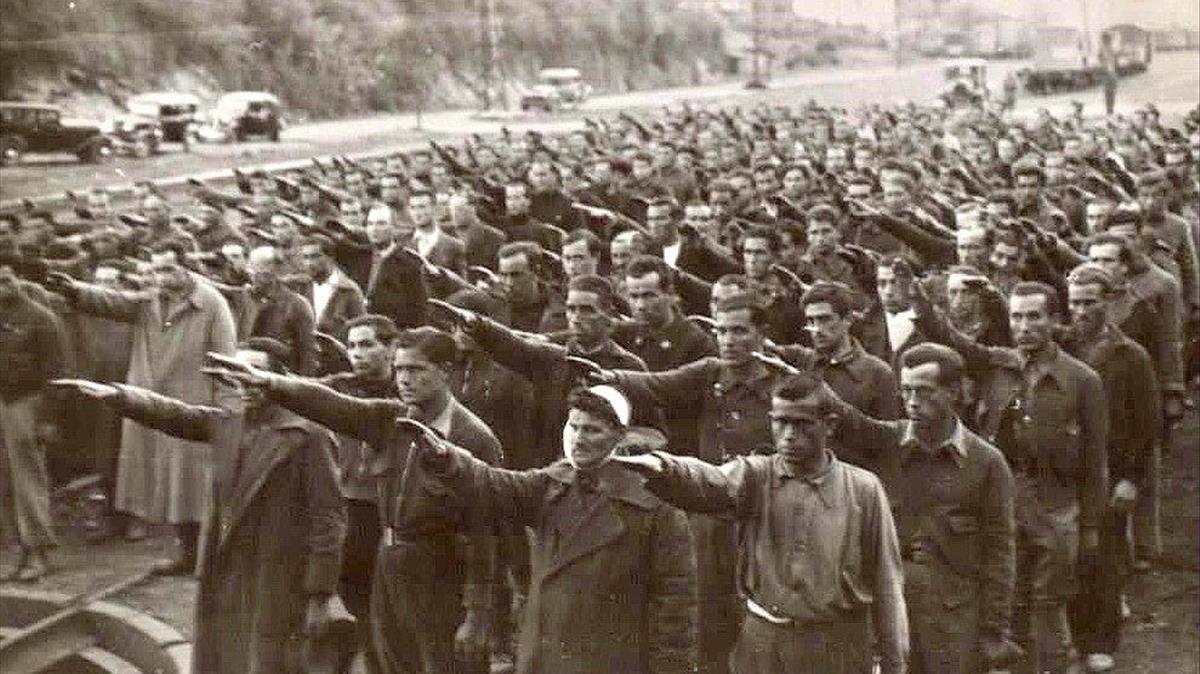The history of Spain’s bloody Civil War and brutal dictatorship that followed is well known.
For many Spaniards, it is still something of an open wound in society, and modern day political divides often follow those historical fault lines.
Recent legislation passed by the Spanish government has attempted to make amends with that history, but it has proven very controversial.
It is also fairly well known that although Spain stayed out of the Second World War, the Franco regime was sympathetic to Hitler and Nazism.
Many historians suggest that Franco’s nationalist army would not have won the Civil War without crucial supplies from Nazi Germany and Fascist Italy, and Franco even moved the Spanish clocks forward by an hour in homage to Hitler, an historical oddity that remains to this day.
READ ALSO: Why Spain is still in the wrong time zone because of Hitler
What is lesser known, however, is that like in Nazi Germany, Francoist Spain had concentration camps.
In fact, in recent years Spanish historians have re-estimated the extent to which concentration camps were used during the Civil War and dictatorship, with experts now putting the number at almost 300.
As many as a million Spaniards (as well as a small number of International Brigade fighters) were held in concentration camps in Spain, spending an average of five years there. Incredibly, the last camp was not shut down until the mid-1960s.
According to the website Los campos de concentración de Franco: “In Spain there were also concentration camps in which tens of thousands of men and women ended up murdered, suffered mistreatment, died of hunger and disease, endured the onslaught of an army of lice on their bodies and were subjected to a cruel process of “re-education” aimed at renouncing their principles and accepting the dogmas imposed by Francoism and the Catholic Church.”
The first camp was opened in the city of Zeluán, in the former Protectorate of Morocco, near Melilla (still a Spanish autonomous city to this day) on July 19th, 1936, and the last was closed in Fuerteventura at the end of the 1960s.
Andalusia had the most concentration camps, with 52. The Valencian Community came next, with 41, followed by Castilla la Mancha with 38, Castilla y León (24), Aragon (18), Extremadura (17), Madrid (16), Catalonia (14), Asturias (12), Galicia and Murcia (11), Cantabria (10), Basque Country (9), Balearic Islands (7), Canary Islands (5), Navarre (2), La Rioja (2) and Ceuta, along with the former Spanish colonies in North Africa, with 5 in total.
Around a third of the total camps were “what we aesthetically imagine as concentration camps, that is, outdoor land with barracks surrounded by barbed wire. Seventy percent were in bullrings, convents, factories or sports fields,” Carlos Hernández, author of The Concentration Camps of Franco, told El Diario.
None of the prisoners had been tried or formally accused, even by Franco’s courts, and the vast majority were captured Republican fighters, although there were also “mayors or left-wing militants” captured after the war.
A distinctive feature of Spanish concentration camps was that “prisoners were considered criminals and lost the status of prisoners of war,” Gutmaro Gómez Bravo, historian from the Complutense University of Madrid, told El País. “They had not been accused of anything nor had they been convicted”.

However, unlike Nazi camps, being sent to one was not necessarily a death sentence. Javier Rodrigo, Professor of History at the Autonomous University of Barcelona, told El País that although “there was no particular desire to treat the prisoners well, there was no extermination plan either, because they were interested in reusing them for their army.”
“They (the concentration camps) were spaces in which prisoners of war are interned, classified and re-educated,” Rodrigo adds.
Each of the prisoners was investigated, mainly through reports from local mayors, priests, Guardia Civil agents and Francoist officials.
Based on this information, prisoners were put into three groups: the forajidos, outlaws considered “unrecoverable”, many of whom were sent to prison or shot; the “forced brothers”, that is, those thought to be Franco sympathisers but forced to fight for the Republicans during the war; and the “disaffected” or “deceived”, those who were on the Republican side but the repressors valued that they did not have a firm ideology and that they were “recoverable.”
The “disaffected” were usually sentenced to forced labour, and during the Civil War they were forced to dig trenches. When the war ended, they were mainly used to rebuild villages or roads.
Hernández’s research has revealed that the prisoners suffered physical and psychological torture along with ideological brainwashing.
They were forced to go to Mass, take Communion, and sing the fascist anthem Cara Al Sol every day. Research has also uncovered testimonies of famines and diseases such as typhus, tuberculosis and lice plagues killing thousands of prisoners. Many were killed in the camp itself by fascist troops, and many died of starvation or disease.
In November 1939, months after the end of the war, a number of the concentration camps were closed, officially at least.
However, some camps, what Hernández calls the “late concentration camps,” continued. More were even created during the 1940s and 1950s for different groups of prisoners and people deemed undesirable by the dictatorship.
Notable post-war camps include Nanclares de Oca (Álava), La Algaba (Seville), Gran Canaria and Fuerteventura, the latter two of which were designated for Moroccan prisoners of the Ifni war and closed in 1959.
Shockingly, it wasn’t until 1966 that the Agricultural Penitentiary Colony in Tefía, Fuerteventura, a camp where homosexuals were imprisoned and “re-educated”, was finally closed.




 Please whitelist us to continue reading.
Please whitelist us to continue reading.
Member comments